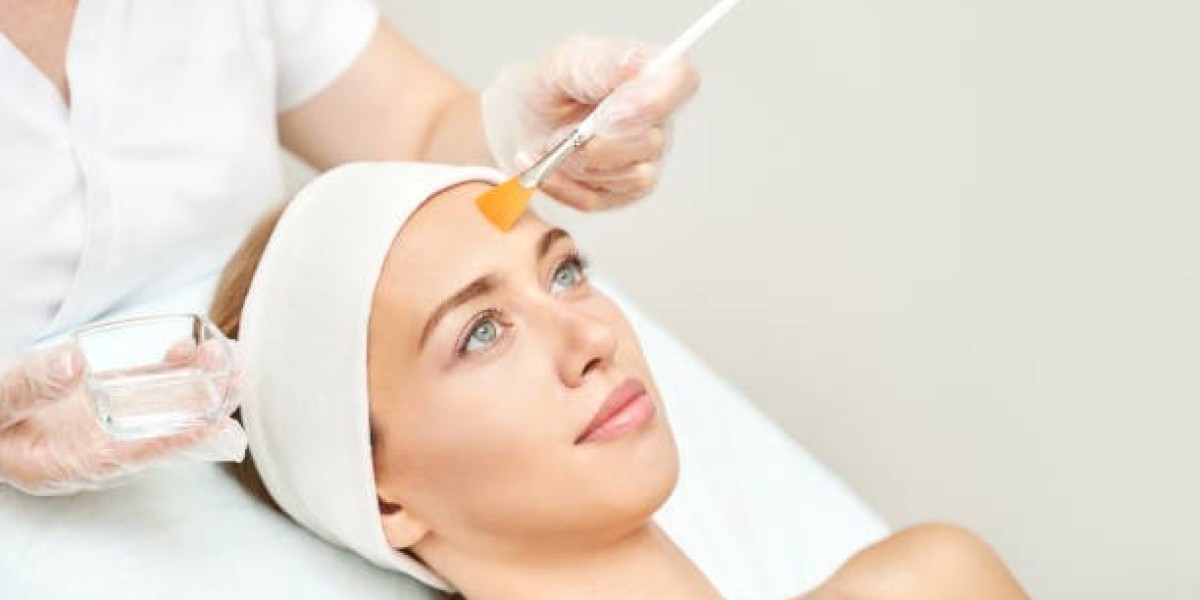In recent years, skin rejuvenation treatments have become a cornerstone of modern skincare, with one option standing out for its versatility and transformative results—chemical peels. Whether you're battling acne scars, sun damage, or fine lines, chemical peels offer a safe, non-invasive route to clearer, brighter, and more youthful-looking skin. This blog explores the before and after journey of individuals who choose chemical peels in Riyadh, diving into how they work, what to expect, and how to care for your skin before and after treatment.
Understanding Chemical Peels
What Are Chemical Peels?
Chemical peels are skin-resurfacing procedures that involve applying a chemical solution to the skin to remove its top layers. The peel accelerates cell turnover, prompting the skin to regenerate and reveal a smoother, healthier layer beneath. Peels can be light, medium, or deep depending on the skin issue being treated.
Why People Choose Chemical Peels
From uneven pigmentation to acne scars, chemical peels offer solutions for a wide range of skin concerns. They can also improve texture, reduce fine lines, and minimize pores, making them a popular choice for individuals looking to refresh their appearance.
The Rise of Chemical Peels in Riyadh
As skincare awareness continues to grow in the region, chemical peels in Riyadh have become a go-to option for residents seeking effective, professional skin treatments. The city's dry climate and high UV exposure make it even more important for individuals to maintain healthy skin, and peels offer a reliable way to address sun damage, dryness, and pigmentation.
Before the Peel: What You Need to Know
Skin Evaluation
Before undergoing a chemical peel, your skin will be carefully evaluated by a licensed dermatologist or skincare professional. This assessment ensures the chosen peel matches your skin type, condition, and goals.
Pre-Treatment Care
Patients are usually advised to:
Avoid exfoliating products a week prior
Discontinue retinoids or acids
Use broad-spectrum sunscreen
Keep the skin hydrated
This preparation minimizes sensitivity and ensures the peel delivers optimal results.
The Procedure: What Happens During a Chemical Peel
Step-by-Step Process
The treatment begins with a thorough cleansing of your skin. A specially formulated chemical solution—often containing glycolic acid, salicylic acid, or trichloroacetic acid—is applied. Depending on the type and strength of the peel, you may feel a slight tingling or burning sensation that lasts a few minutes. The solution is then neutralized and removed.
Duration and Comfort Level
The procedure typically lasts 20–40 minutes. Light peels involve minimal discomfort, while medium or deep peels may require mild sedation or a numbing agent.
Immediately After the Peel: What to Expect
Common Reactions
It’s completely normal for your skin to:
Look red or flushed
Feel tight or sensitive
Begin peeling within 48 hours
These are signs that the old, damaged skin is shedding, allowing new skin to surface.
Downtime & Healing
Light peels: 1–3 days recovery
Medium peels: 5–7 days recovery
Deep peels: Up to two weeks
Proper aftercare is essential to ensure a smooth recovery and avoid complications like hyperpigmentation or infection.
Aftercare: Protecting Your New Skin
Hydration is Key
After the peel, your skin barrier is temporarily weakened. Hydrating creams and gentle cleansers are recommended to maintain skin moisture and prevent irritation.
Avoid Sun Exposure
Use a physical (mineral) sunscreen with SPF 30 or higher. Sun exposure can worsen side effects and reverse your results.
Skip the Makeup
For the first few days post-peel, it's best to let your skin breathe. Avoid applying makeup to prevent clogging pores and irritating fresh skin.
Results: What the "After" Looks Like
Visible Improvements
After the peeling process is complete, most individuals experience:
Brighter, more even-toned skin
Fewer breakouts
Reduction in pigmentation
A smoother texture overall
How Long Do Results Last?
Depending on the peel type and your skincare habits, results can last from a few months to several years. Regular maintenance with mild peels and good skincare extends the benefits.
Who Should Consider Chemical Peels in Riyadh?
Chemical peels are ideal for:
Adults with acne scars or hyperpigmentation
Individuals experiencing dull, dry, or sun-damaged skin
Those looking to reduce fine lines and uneven tone
Residents in Riyadh, where environmental stressors are high, particularly benefit from periodic exfoliating treatments like these.
Risks and Side Effects
Temporary Reactions
These include redness, peeling, sensitivity, and dryness. These are expected and typically subside within days.
Rare Complications
Though rare, deeper peels can lead to scarring, infection, or pigment changes, especially if post-treatment guidelines aren’t followed properly.
How Often Should You Get a Chemical Peel?
Frequency depends on the type of peel:
Light peels: Every 4–6 weeks
Medium peels: Every 3–6 months
Deep peels: Once a year or less
Following a treatment plan developed by your skincare provider will yield the best outcomes.
Frequently Asked Questions
❓ What is the ideal age to start chemical peels?
There is no fixed age, but most people begin in their late 20s to early 30s, once signs of aging or acne scars become visible.
❓ Are chemical peels suitable for all skin tones?
Yes, but it's crucial to select the right type of peel. Superficial peels are generally safe for darker skin tones, while medium or deep peels require professional supervision to avoid pigmentation issues.
❓ Can I get chemical peels in Riyadh during summer?
Yes, but extra precautions are necessary. Use SPF religiously, avoid peak sunlight hours, and follow your aftercare strictly to prevent sun damage.
❓ How soon can I wear makeup after a chemical peel?
It’s recommended to wait at least 3–5 days or until peeling subsides. Applying makeup too soon can hinder healing and irritate the skin.
Conclusion
Chemical peels in Riyadh are more than just a beauty trend—they're a tried-and-true solution for revitalizing your skin, improving texture, and addressing deep-rooted issues like acne scars, sun damage, and pigmentation. The before and after journey isn’t just about aesthetics; it’s about renewed confidence, healthier skin, and long-lasting transformation.






